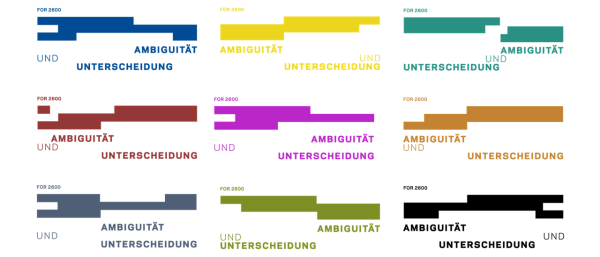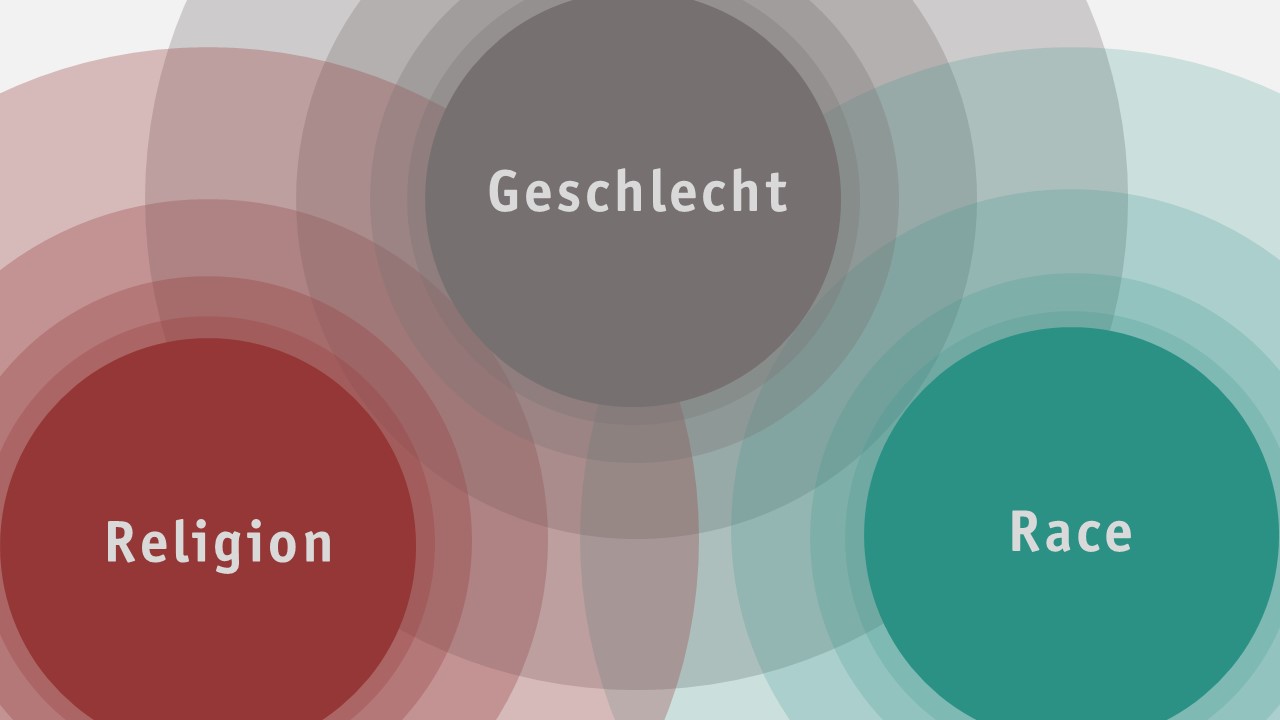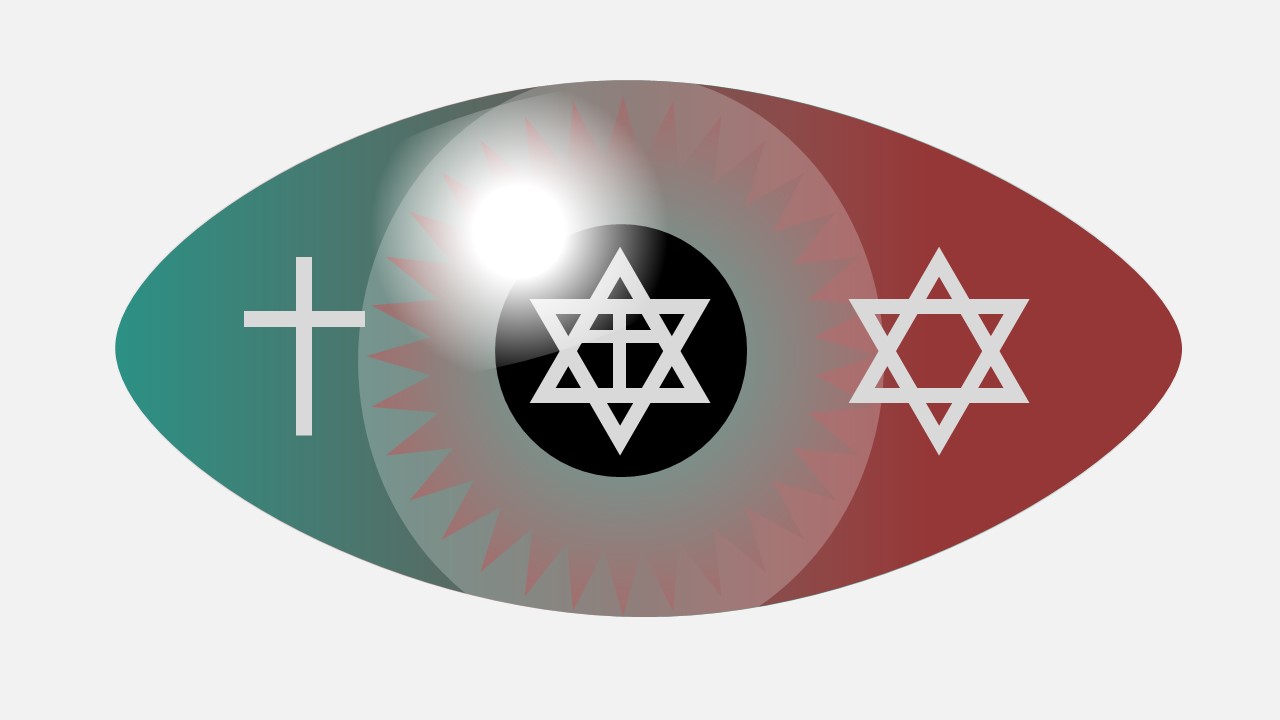Welcome to Research Unit "Ambiguity and Distinction. Historical and Cultural Dynamics."


Ambiguity and Distinction. Historical and Cultural Dynamics
What happens when phenomena are ambiguous and cannot be clearly categorized? How do persons, groups, and societies deal with situations in which the distinctions with which they usually operate encounter ambiguous phenomena? How is it to be explained that attempts at order through supposedly clear distinctions so often produce the very ambiguities they were supposed to master? These and other questions are addressed by Research Unit 2600 "Ambiguity and Distinction. Historical and Cultural Dynamics," funded by the German Research Foundation since the beginning of 2019. In April 2022, the group started into its second three-year funding period.
Our research network focuses on the relationship between ambiguity and distinction and the dynamics that arise from this tension. Ambiguity occurs where the distinctions that help to order the social world are no longer effective. At the center of our research stand the three distinctions of religion, gender, and race, since these are central differences that assume important ordering functions in numerous historical and contemporary societies. Therefore, the ambiguiation of these categories should trigger particularly intense and lasting irritations.

This can be illustrated, for example, by the observation of Jewish converts to Christianity in the late Middle Ages: They or their ancestors had converted to Christianity. But in the eyes of many of their Christian contemporaries they had not completely severed the connection to their religion of origin. They were observed as conundrums who seemed to fit on one or the other side of the religious distinction at the same time, and thus ultimately on neither side - regardless of how much the persons concerned might regard themselves to be orthodox Christians.

As this example shows, the Research Unit does not consider ambiguity as the property of an object. Persons, objects, epochs or societies do not possess ambiguity, but are observed as ambiguous by an observer, i.e. a person, a group or an organization. Ambiguity is thus in the eye of a behholder who fails in the application of hitherto used distinctions.

Thus, ambiguity gives rise to situations of epistemic candor, which can lead to various solutions: The ambiguity can be taken as enrichment and the distinction can be supplemented by further values; the distinction can be dropped and be replaced by different one; or the ambiguity can be rejected and the distinction can be enforced, as it were, against the resistance of the phenomena.
In its subprojects, the Research Unit "Ambiguity and Differentiation. Historical-Cultural Dynamics" exploreswhich solution is chosen under which circumstances on the basis of different settings. The network unites subprojects from American Studies, Art Studies, English Studies, German Studies, and History, whose geographical spectrum ranges from the North American colonies to Central Europe, the Eastern Mediterranean and Australia. Chronologically, the settings of the subprojects range from the late Middle Ages through the Baroque period to the recent past.

These are the subprojects in the second period of funding:
- The Ambiguous Century: Gender, “Movements,” and Ambiguity Aesthetics in Nineteenth-Century American Literature
Dr. Elena Furlanetto (Principal investigator) - Praktiken des Neo-Osmanismus in Kunst und Kunstwissenschaft: Medien der Sakralisierung zwischen anachronistischer Affirmation und Subversion
Prof. Dr. Gabriele Genge (Principal investigator) / Eva Liedtjens / Esra Canpalat - Ambiguity and Disambiguation of Belonging - The Regulation of Alienness in the Caribbean during the Revolutionary Era (1780s-1820s)
Prof. Dr. Jan C. Jansen (Principal investigator) / Dr. Sophie Rose - Dis/Ambiguation Religious Affiliations: Sectarians, Agnostics, and Secularists in the Late Ottoman Empire and Turkey
Prof. Dr. Kader Konuk (Principal investigator) / Dr. Gülbin Kıranoğlu / Dr. Zeynep Tüfekçioğlu - Orientalism in Colonial Australia (1770-1901): A Transimperial Perspective
Prof. Dr. Patricia Plummer (Principal investigator) / Dr. Syed Kazim Ali Kazmi - Das Meer der Neuchristen: Mobilität und Ambiguität konvertierter Juden und ihrer Nachkommen im Adriaraum des Spätmittelalters und der frühen Neuzeit
Prof. Dr. Benjamin Scheller (Principal investigator) / Dr. Nicolò Villanti / Marcel Müllerburg - The Ambiguity of the Turkish in Early Modern German Narrative Literature
Prof. Dr. Jörg Wesche (Principal investigator) / Julius Thelen
An overview with the subprojects of the first funding period (2019-2022) can be found here (German only).
In its second funding period (2022-2025), the Research Unit focuses on interferences between different forms of ambiguities. Thus, we ask whether and, if so, how the ambiguity of one distinction affects the operation with another distinction. When distinctions are used, there can be overlaps that enhance or level contrasts. For example, does it make a difference if the ambiguous religious lifestyle and identity of converts from Judaism to Christianity in the late Middle Ages and early modern period is attributed to men or women? Does religious ambiguity reinforce gender distinctions? Or does a kind of "contagion" take place, so that religious ambiguity also ambiguates the distinction between men and women?
We explore these and related questions in collaborative work structures. The individual subprojects write concise "data stories". In these data stories, material from the settings is presented, contextualized in broad outlines, and examined for the ambiguity phenomenon it contains. In a second step, these data stories are then comparatively related to each other. In this way, the Research Unit intends, on the one hand, to follow a methodologically controlled path starting from the material and its detailed description to social diagnosis, in order to arrive at statements of medium scope about ambiguity and how it is dealt with in various pre-modern and modern settings. On the other hand, this approach aims at an experimental further development of collaborative forms of work in the humanities, which seems to us to be appropriate especially for dealing with ambiguous phenomena.
Coordinator
Marcel Müllerburg
marcel.muellerburg@uni-due.de
Student assistant
Pamela Mannke-Gardecki
pamela.mannke-gardecki@stud.uni-due.de
